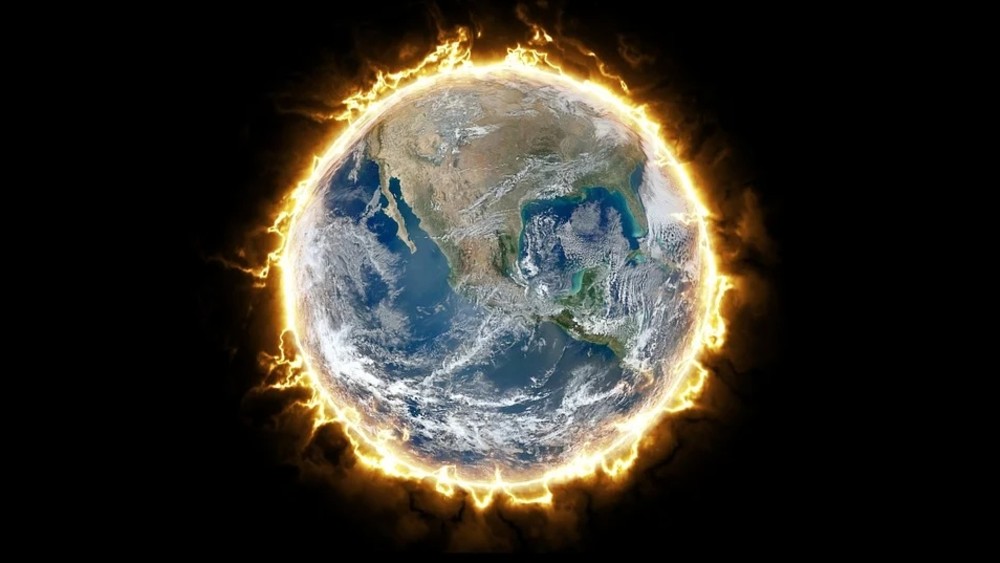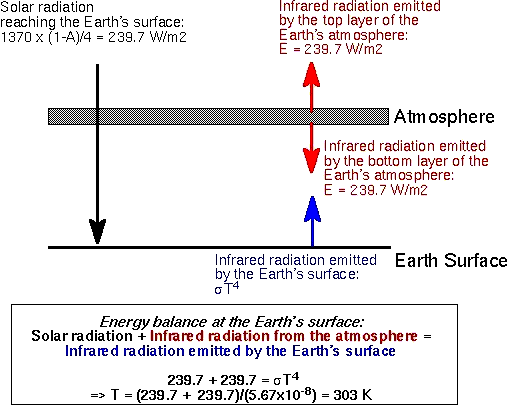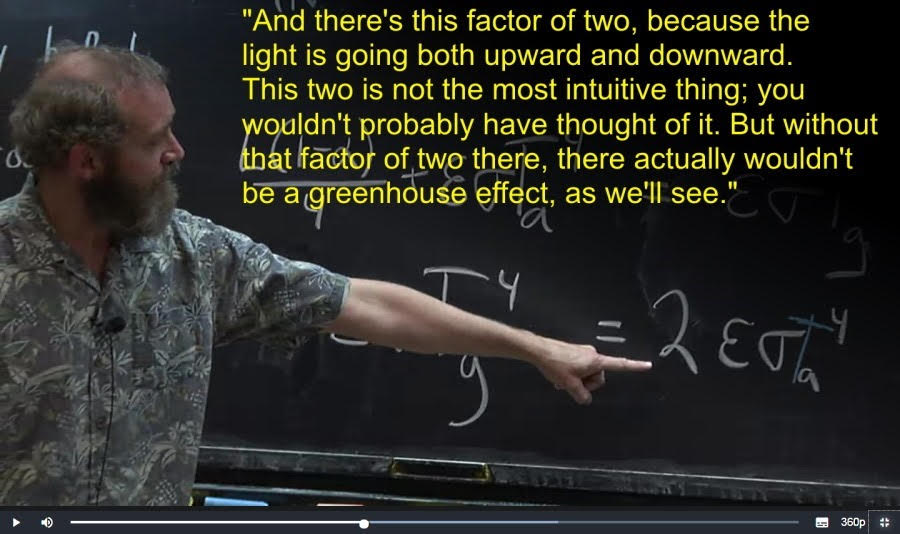How does the Earth’s Greenhouse Effect work? (Hint: It doesn’t)
The greenhouse concept works for actual greenhouses but makes no sense when applied to the way the earth takes in and pushes out heat.
This is a guest post by my friend Alan Siddons. Given my science phobia, I asked him to explain in the simplest possible terms why the greenhouse gas theory is wrong. This is what he wrote and I’d like to share it with you:
*****
Lurking behind the scary stories of people burning fossil fuels and thereby releasing Carbon Dioxide, which threatens to overheat our planet, is the theory of the Greenhouse Effect, the notion that certain gases trap heat and prevent the Earth from cooling off. So let’s look at a simple model of how this happens, the way it’s taught in colleges. Take the University of Washington’s explanation, for instance, from which I’ve copied this graphic.
The idea here is that light from the Sun passes freely through the air and heats the surface but that a layer of greenhouse gases absorbs the outgoing heat rays.
Ah, you may say, that’s how the outgoing heat rays get trapped. It really is like being in a glass room on a hot day.
Well, no. Look again at the chart and see for yourself: 239.7 watts per square meter (W/m²) of heat go into the system and 239.7 go out. All of the heat that the Sun has caused escapes to outer space.
Now, subtracting 239.7 from 239.7 leaves a remainder of what? If you answer zero, you get a star. The University of Washington’s simplified model indicates that you’re wrong, however, because 239.7 W/m² somehow gets left behind. That extra 239.7, goes the explanation, radiates downward, resulting in the surface receiving 479.4 watts of heat, which is twice what it had before.
Bear in mind that a watt is an energy transfer rate of 1 joule per second. Heat from the Sun can thus be thought of as the Earth’s thermal income. If the surface earns (absorbs) 239.7 joules per second and spends (emits to space) 239.7 joules per second, then no more energy is available to earn or spend. Yet this simplified model of the greenhouse effect has the surface gaining 239.7 from the Sun, losing 239.7 to space, and gaining another 239.7 from the atmosphere, which means that 239.7 watts have been counted twice.
Indeed, if you go here, you can see a video in which Professor David Archer uses the same model to explain the greenhouse effect. At 3:55 minutes in he points at the factor of 2 for the rate of energy gain on the surface due to greenhouse gases.
So take professor Archer at his word. The Greenhouse Effect can only exist if you count the energy rate twice. Since you cannot count the energy rate twice, the Greenhouse Effect does not exist.
Here’s the take-home lesson:
- Even complicated models of the greenhouse effect show that the outward rate of solar-derived heat is equal to the inward rate, meaning that greenhouse gases cannot be regarded as trapping heat, despite what you’ve been told.
- Instead, these models show that greenhouse gases actually PRODUCE heat by an unknown means. No insulative (i.e., heat trapping) device has ever been invented that can generate more watts than are being consumed.
- Far from being a settled science, the physics of the Earth’s greenhouse effect isn’t scientific at all. The misleading term “greenhouse gas” should be abandoned.
UPDATE: Alan sent me a link to this video with more information about what a joule is:
He adds, “To get a sense of it yourself, lifting a small apple 1 meter off the ground requires about 1 Joule of energy. By the same token, drop the apple from that distance and it impacts the ground with the energy of 1 Joule.”



